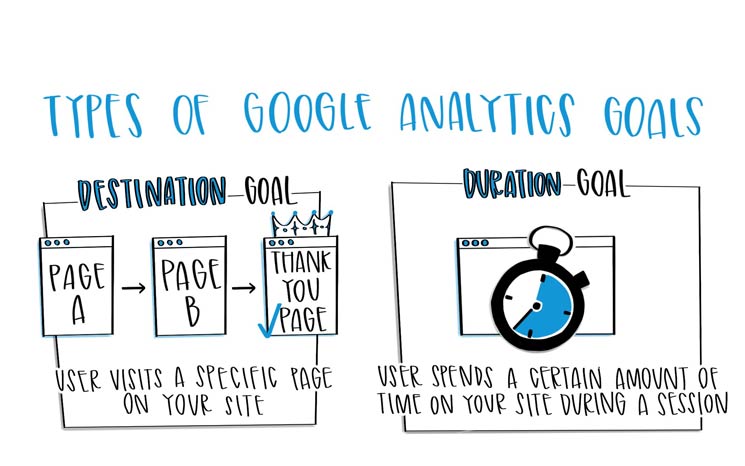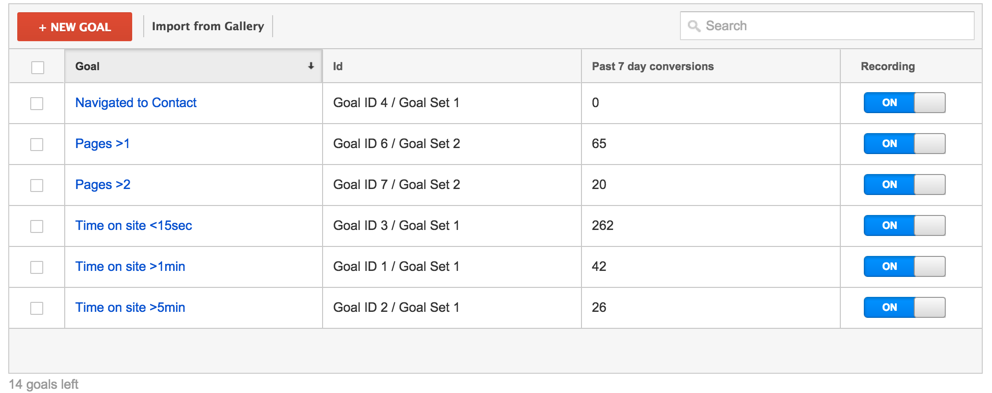What Data Is Google Analytics Goals Unable to Track and Why
What Data Is Google Analytics Goals Unable to Track and Why
Blog Article
Debunking Google Analytics Limitations: Uncover What Information Goals Can not Track
In the realm of digital analytics, Google Analytics stands as an effective tool that gives valuable insights into internet site efficiency and individual behavior. From the details of customer interaction with dynamic material to the complexities of cross-device user journeys, these limitations lost light on locations that may continue to be obscured from traditional analytics perspectives.

User Communication With Dynamic Content
Customer communication with dynamic web content plays a critical role in understanding customer habits on websites and optimizing the overall individual experience. Dynamic content refers to components on a webpage that can transform without the need for a complete web page reload. This consists of interactive elements such as pop-ups, sliders, kinds, and video clips that reply to customer actions in real-time. By tracking individual communications with vibrant web content, site owners can obtain beneficial understandings into user engagement, choices, and habits.
Google Analytics provides various tools to track individual interactions with dynamic web content, such as occasion monitoring and virtual pageviews. Occasion monitoring allows you to monitor specific user activities, like clicking a switch or seeing a video, providing data on just how users communicate with dynamic aspects.
Cross-Device Individual Journeys
How can contemporary analytics tools track the complex courses users take across numerous devices in their online journeys? Cross-device individual trips provide a significant obstacle for monitoring and analyzing user behavior accurately. As individuals engage with internet sites or apps making use of different devices such as tablet computers, desktop computers, and smartphones, it becomes essential to understand exactly how they relocate between these platforms to maximize individual experience efficiently.
Google Analytics deals with limitations in tracking cross-device user trips because of privacy worries and technological restraints - what data is google analytics goals unable to track. While it can offer understandings into private tools' interactions, tracking a smooth customer trip across several tools continues to be a challenge. This restriction can result in incomplete data and fragmented user insights, making it difficult for organizations to produce a unified view of the client journey
To address this problem, services can make use of innovative analytics devices that offer cross-device tracking abilities, permitting them to gain an extra holistic understanding of individual actions. By leveraging these devices, companies can connect the gap in tracking cross-device user journeys and maximize their digital approaches for a seamless user experience.
Offline Conversions and Acknowledgment
As businesses browse the difficulties of tracking cross-device user trips, an additional critical aspect to consider is the world of offline conversions and acknowledgment in the realm of information analytics. While Google Analytics offers beneficial insights into on-line customer behavior, it drops short when it comes to tracking conversions that take place offline. This constraint presents a substantial obstacle for companies that have both online and offline sales networks.
Offline conversions, such as acquisitions made in physical shops or with call facilities, are vital to comprehending the full client journey. Without the capability to attribute these offline conversions to particular online communications, organizations may battle to accurately gauge the effect of their digital advertising and marketing efforts.
To address this void, businesses can discover different options such as incorporating CRM systems with online analytics devices or utilizing special discount codes that can be mapped back to online projects. By connecting the space in between online and offline data, companies can gain a much more extensive understanding of their customers' habits and improve their general marketing strategies.
Person User Identification
In the realm of information analytics, the capability to precisely recognize private customers across different on-line touchpoints is a vital obstacle for organizations seeking to customize and optimize their marketing techniques. While Google Analytics supplies important insights into individual behavior and interactions, it falls short in enabling the recognition of specific people because of privacy concerns and technical limitations. Google Analytics utilizes distinct identifiers such as cookies to track individual sessions and actions, but these do not relate to determining specific customers in an individual sense.

Data From Secure Pages
Despite the raising prevalence of safe and secure web pages on sites, getting data from these encrypted sources offers an one-of-a-kind obstacle for digital analytics platforms like Google Analytics. Safeguard web pages, suggested by HTTPS in the link, secure data exchanged between the individual's internet browser and the web site's web server to make sure privacy and safety and security. While this encryption pop over here is vital for safeguarding sensitive details, it also presents restrictions for tracking user behavior and event analytics information.
Google Analytics faces obstacles in accumulating detailed details from safe pages as a result of the file encryption methods in position. As an outcome, certain information factors such as recommendation sources, keyword searches, and also some user interactions might not be fully caught when individuals access a web site through a safe and secure link. This constraint can impact the accuracy and efficiency of the data analysis, bring about spaces in understanding individual actions and preferences on safe and secure web pages.
To navigate this difficulty, digital experts may require to explore alternate tracking approaches or leverage other devices especially designed to gather understandings from secure web pages. By adapting strategies to suit these constraints, organizations can still obtain useful analytics despite the restraints provided by encrypted connections.
Final Thought
In final thought, Google Analytics has limitations in tracking individual communication with vibrant content, cross-device customer journeys, offline conversions, private user recognition, and data from safe and secure web pages. These restrictions hinder a comprehensive understanding of user behavior and might cause voids in data evaluation. In spite of its beneficial understandings, Google Analytics may not give a complete photo of user interaction throughout various touchpoints. It is important for organizations to be knowledgeable about these constraints and consider additional devices for a much more holistic sight of their data.
Individual communication with vibrant material plays an essential duty in understanding customer behavior on web sites and enhancing the overall user experience. By tracking user interactions with vibrant content, web site proprietors can gain beneficial understandings into customer interaction, preferences, and behaviors.
Google Analytics uses one-of-a-kind identifiers such as cookies to track user Read Full Report sessions and actions, check my source but these do not relate to determining individual customers in an individual sense.
As a result, certain data factors such as referral resources, keyword searches, and also some user communications may not be fully recorded when users access an internet site via a safe link.In final thought, Google Analytics has constraints in tracking customer communication with dynamic web content, cross-device user journeys, offline conversions, private customer identification, and data from safe web pages.
Report this page